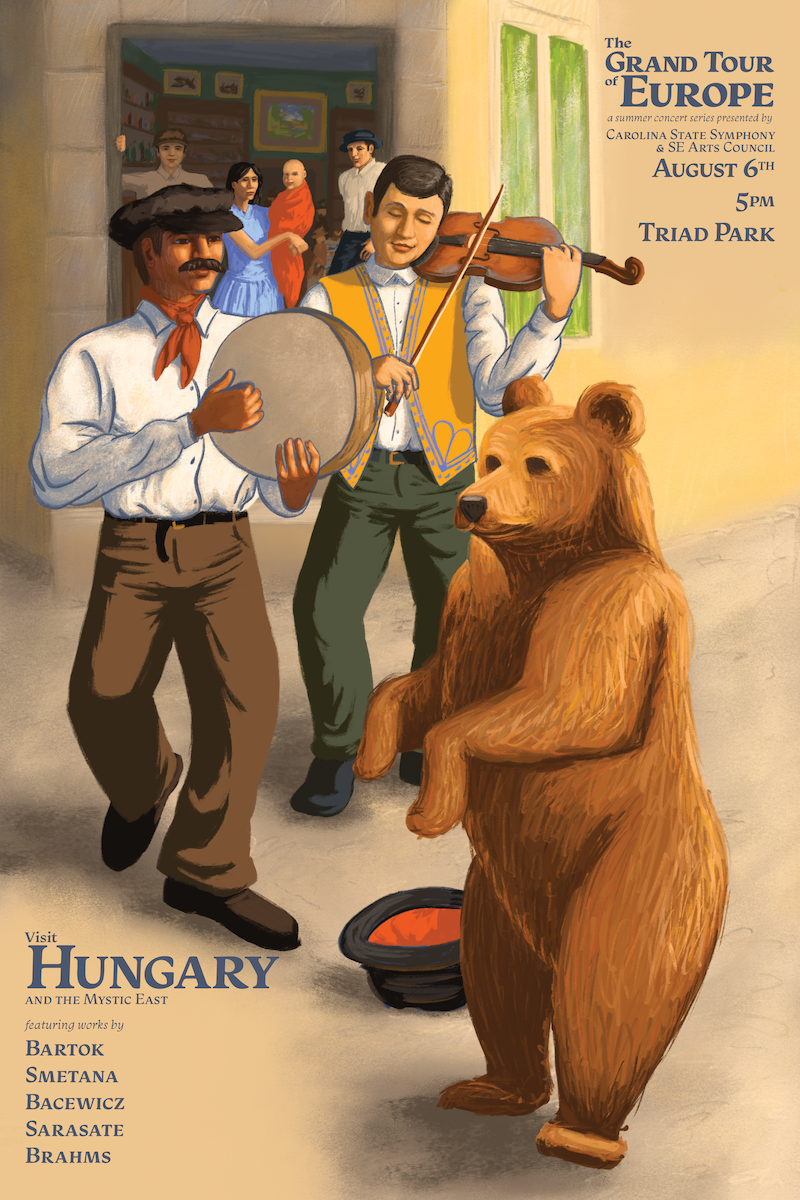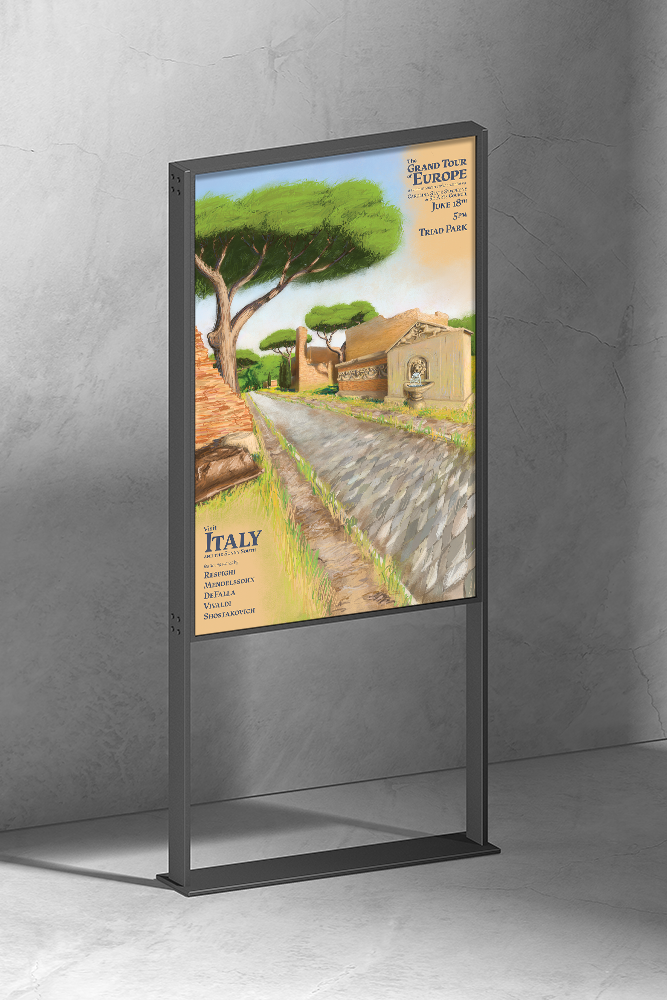The Carolina State Symphony is known for its summer concert series, a series of classical music concerts meant to provide family-friendly entertainment, exposure for the organization, and education for classical music as a whole. The concert series had been canceled for the previous two years and CSS wanted to bring it back this summer in a large and celebratory fashion. I was tasked with illustrating and designing posters for the concert series, three of which are displayed. I wanted to create something that highlighted the grand and celebratory nature of the return of CSS to live performances while also creating something that was engaging and humanistic to connect with the target audience.
The theme for this concert series was traveling through music. Due to the pandemic, people have been confined to living and working at home, without a chance to get out and explore beyond their immediate area. The concert series was titled "The Grand Tour of Europe," based on the 17-19th century practice of the upper-class pilgrimage throughout Europe. The concert programs are organized by country and combine both native composers and composers who have written pieces inspired by these locations.
To create a visually cohesive series of posters, I used a consistent color palette and compositional construction. The colors are bright and saturated while the foundation of each composition is a diagonal moving from lower right to upper left and foreground to background. This diagonal push is what gives the posters motion and energy, while the colorful palette gives them visual excitement. The subject matter was inspired by the program selections. All illustrations were created in Procreate, using custom-designed brushes.



The three selected posters feature Italy, France, and Hungary. The Italian poster is based on the selected piece "The Pines of Rome," specifically its final movement, by Respighi. The poster depicts a section of the Appian Way, the famous road leading into Rome. The French poster depicts a group of can-can dancers and is based on the Offenbach selection "Gaîté Parisienne." Lastly, the Hungarian Poster draws inspiration from a movement of Bartok's "Hungarian Sketches" and depicts a dancing bear, accompanying musicians, and a group of onlookers.



